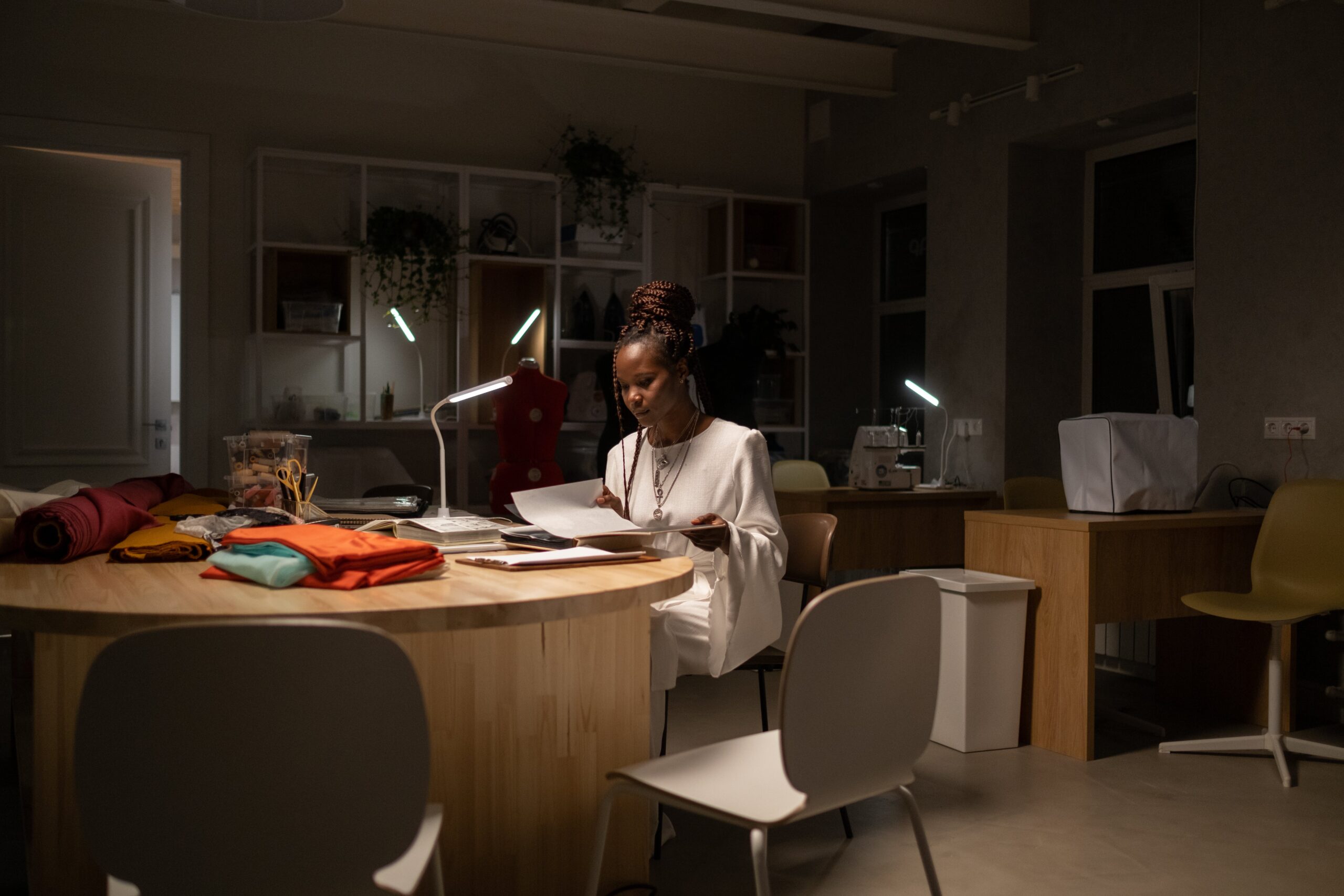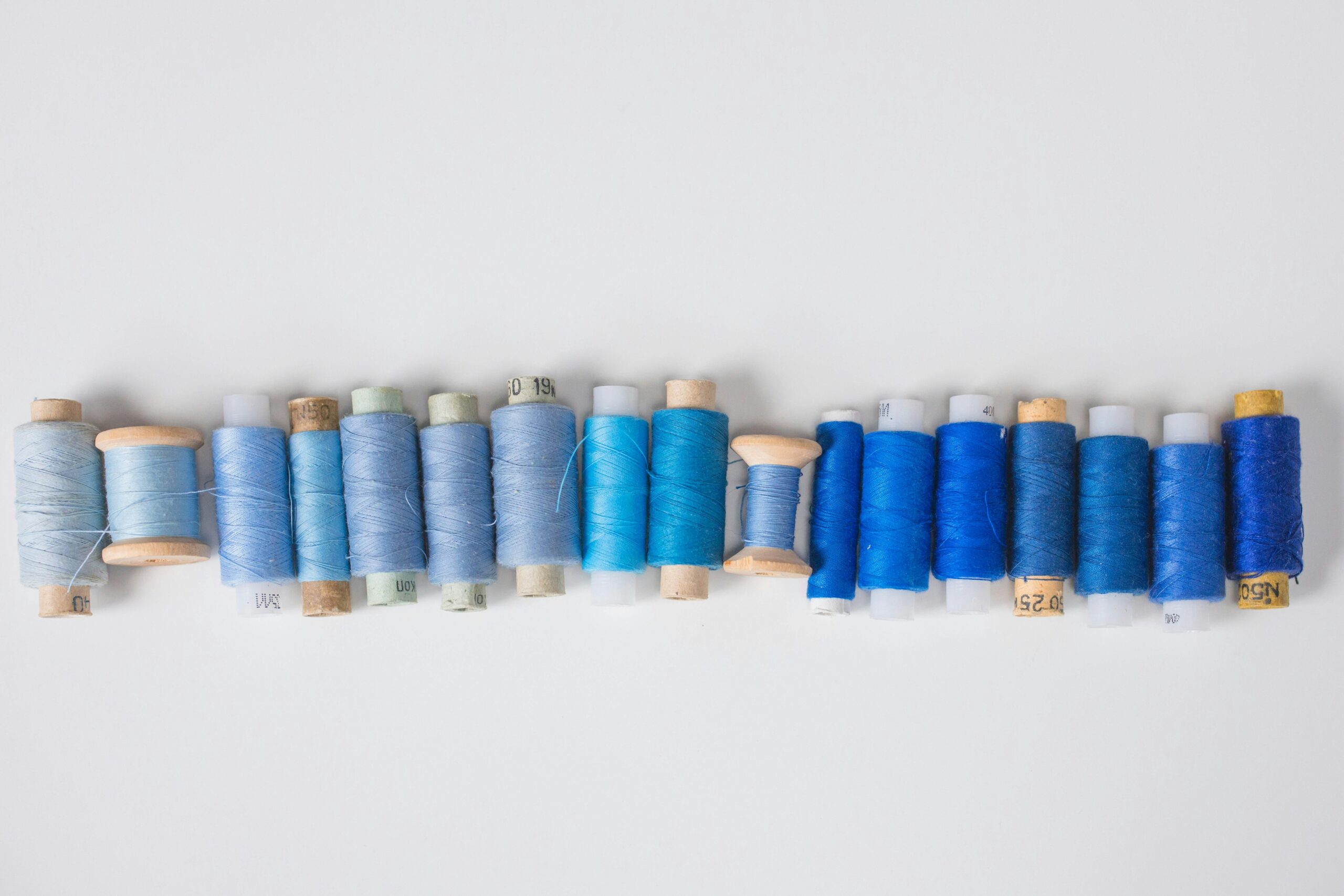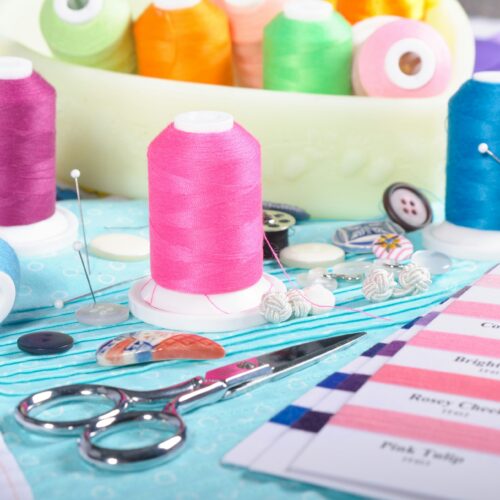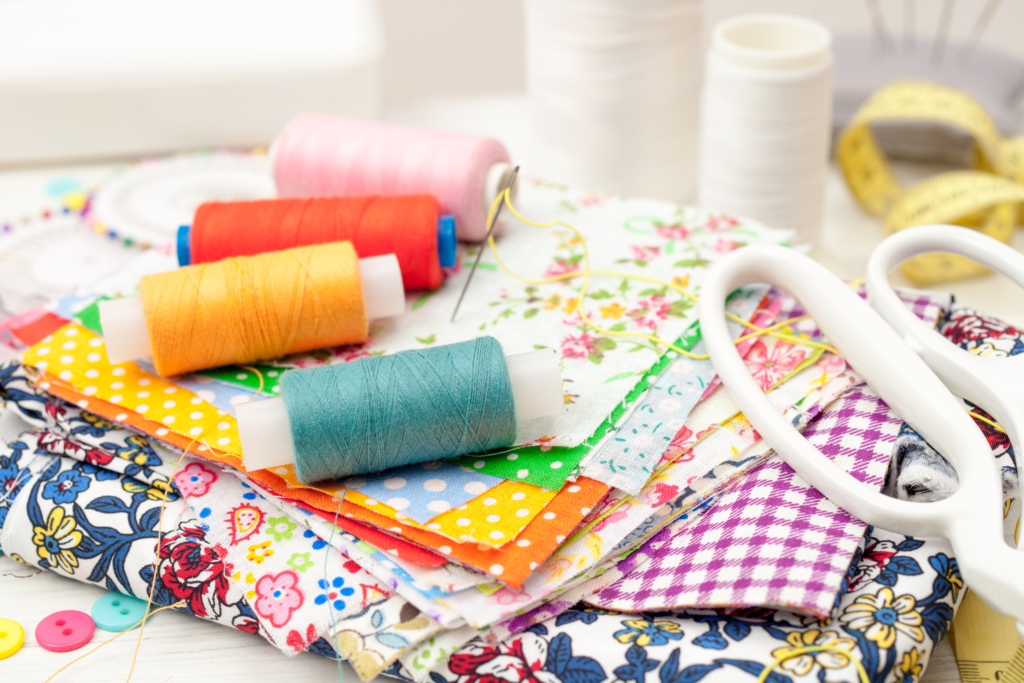
Note: This post contains affiliate links in which commission is earned when purchases are made.
If you are new to sewing or thinking about learning how to sew, you might be wondering what supplies you need to get started. I want you to know that you don’t have to start with all the different gadgets you see many experienced sewers use. There’s not a ton of sewing supplies you need as a beginner, but these are items that will definitely get your sewing journey off to a good start.
Sewing Machine
In my opinion, if you are just starting your sewing journey, you only need a sewing machine with the basic stitches and functions. These are functions like straight stitches, zig zag stitches, buttonhole function (optional), and features where you can control your tension. I feel that also having the instruction book to that machine is very important as well. If your machine does not have the instruction book, you may be able to find one online or even on the sewing machine brand’s website. However, the instruction book is really going to help you understand the features and functions of the sewing machine you have, and as a beginner, this is very important.
Most machines, especially if they’re new, are going to come with the tools that’s needed for that machine. These are tools such as: presser foot, universal sewing machine needles, bobbins, cleaning brushes, and even a tool to undue the screws to service the machine. If you borrow a machine or purchase one from a thrift store, or yard sale, your machine may not come with these tools, but they are available to purchase at most of your local stores where there is a sewing department. Just know that you don’t have to have the “top of the line” brands because you are learning.
Scissors
There are three different types of scissors I suggest you have to get started.
- Fabric Scissors – These scissors are strictly for cutting fabric. If you decide to use these scissors for cutting anything else besides fabric, you will most likely regret it. Using your fabric scissors on anything else will dull your scissors and will not cut your fabric properly, causing jagged edges and unnecessary fraying, if they cut the fabric at all. Only use your fabric scissors for fabric only
- Paper Scissors – These scissors are for only for cutting paper. Just like fabric scissors, doing the opposite and cutting fabric with your paper scissors can dull your scissors and not give a clean and scrip cut to your paper patterns and more. Side Note: I labeled my fabric scissors and my paper scissors so that I would not get them confused, and also explaining this to my family helped in preserving my scissors as well.
- Pinking Shears – These scissors are perfect for finishing your edges so that they don’t fray. These scissors have a zig zag blade that cuts your edges in this design to add a decorative finish and stop fraying at the same time. As you get more experienced, you will eventually want to get a serger to finish your edges, but as a beginner, pinking shears will work just fine.
Let me just say, not having pinking shears as a beginner won’t stop you from sewing, you will just need to look at other methods if your fabric frays badly.
Measuring Tape
Please believe me when I say, “YOU WILL MEASURE OFTEN!” This item is definitely not an option and it will be one of your most used sewing supplies during your entire journey. Your measuring tape is your best friend when it comes to picking the right size pattern. It also doesn’t hurt to have a backup just in case you misplace one. This is different from a ruler, because it is flexible and can go around any curvature.
As you probable know, the measuring tape is for taking your body measuring, and you will find yourself taking these measurements often, as our bodies do fluctuate from time to time. The measuring tape is also used for measuring around the curve of a pattern piece, like an armhole.
Ruler
A ruler is different from a measuring tape, although they both measure. I prefer using an acrylic ruler that is see-through, because I can see where the placement is on the fabric or the pattern to make sure I am cutting in the right place.
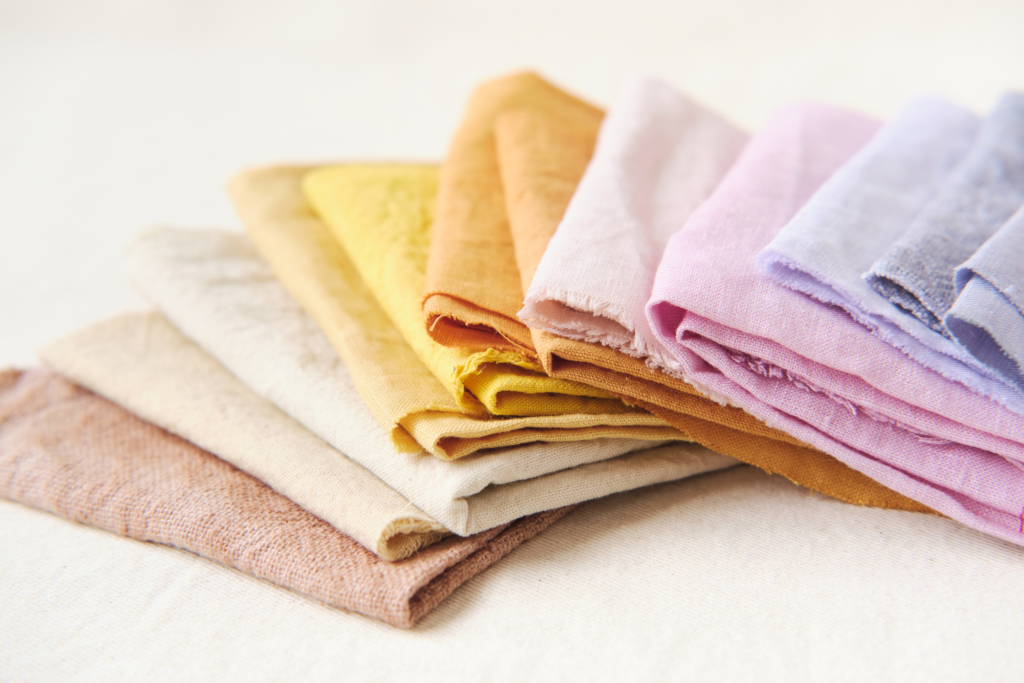
Fabric
As a beginner, I urge you to start with a cotton or linen fabric. These are woven fabrics that are stable and easy to work with. I do not suggest sewing with knits until you get used to the sewing process. Knits are not stable and tend to stretch and move while you sew, and this can be very frustrating for a beginner.
Pattern
There are so many patterns to choose from in the store and online. There is definitely not a shortage in this department…LOL! In order to make sure you are choosing the right pattern as a beginner, you want to pay attention to the details, especially if you are self-teaching. There are many “learn to sew” and “easy to sew” patterns, but I highly suggest starting with patterns that do not include buttons or zippers.
Pattern Weights
This is not a necessity, but I wanted to mention it, because it does make the process of cutting out your fabric a bit faster. I like to use utility washers as my pattern weights, but you can also use anything around the house such as, canned good, rice bags, and anything else that will hold the pattern piece down without damaging the pattern nor the fabric. As you’ll read a little further down, you can also use your straight pins to pin the pattern to the fabric.
Seam Ripper
Mistakes are going to happen and your seam ripper makes it a lot faster and easier to remove stitches when you need to. This is another tool you will use often as well. A lot of newer machines do come with a seam ripper that’s usually small, but I do prefer to use an ergonomic seam ripper. This particular seam ripper has an ergonomic handle that makes it more comfortable when in use, and this is very much appreciated when you have a lot of stitches to remove. But, if you just have a regular seam ripper, it works just fine, and having a backup doesn’t hurt here either.
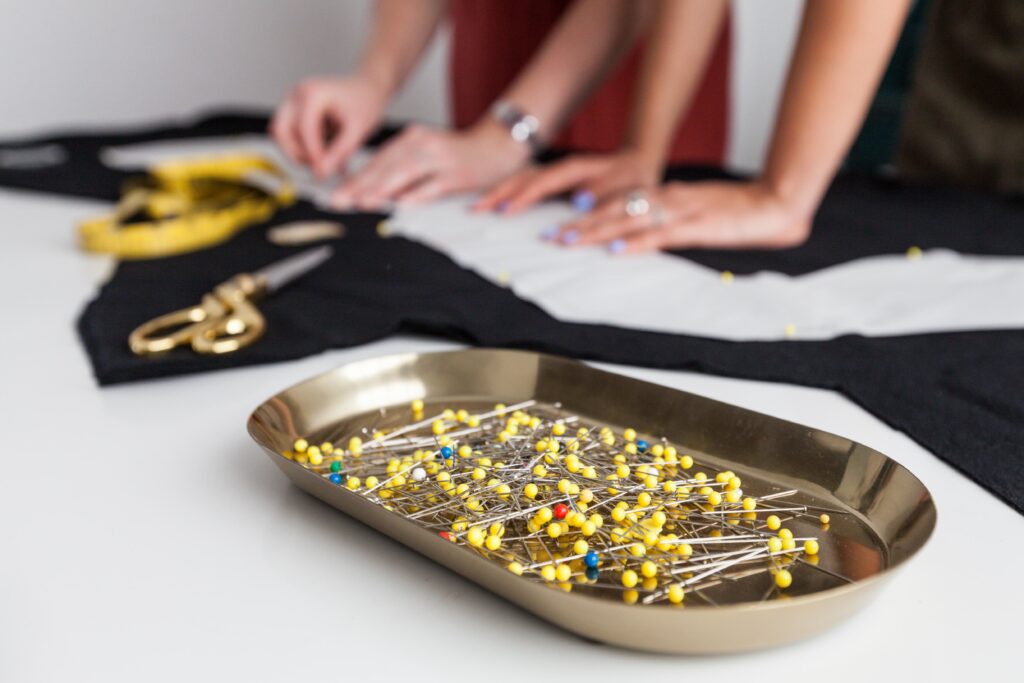
Straight Pins and Pin Holder
You need something to hold your fabric pieces together when sewing. Straight pins are not only needed for holding your fabric together, but they can also be used to pin your pattern pieces to the fabric before cutting it out. I like to use quilting pins because they are longer and I can secure the fabric better. Quilting pins also comes with different types of cute little heads like butterflies and flowers to make them easier to see.
The pin holder is needed for when you remove the pins from your fabric. This can be a magnetic pin holder or a pin cushion, but one or the other is needed to keep your pins from rolling onto the floor and you accidentally stepping on them.
Hand Needles
Needles serve two purposes in sewing. There are needles for your sewing machine and there are needles for hand-sewing. Since we know that most sewing machines do come with a universal needles, right now, I am referring to hand-sewing needles.
There are some elements of sewing that will require you to hand-sew in order to finish your project, whether it be a garment or a craft. Using different types of stitches, hand-sewing often gives a clean finish without stitches being seen in certain areas.
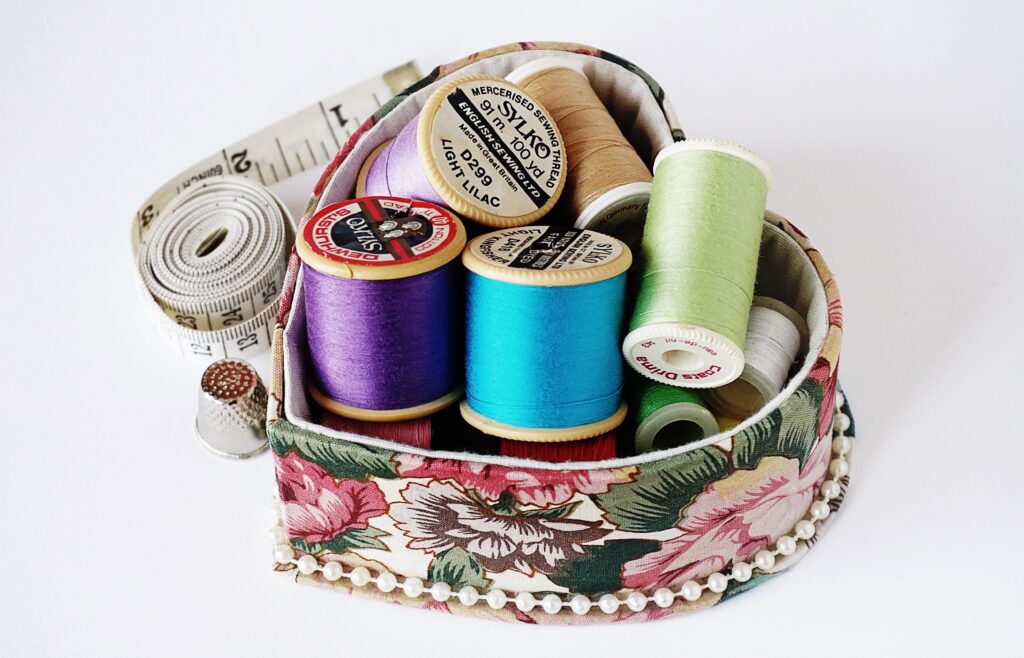
Thread
It’s pretty obvious that you will need thread to sew. Having thread to match your different garments is always a good idea, but making sure that your have plenty of your most used thread color is a better idea. For this, my most used color is black, so I usually have about 2 to 3 extra spools on hand.
Now, it is not mandatory that you have every color on hand when you are just beginning, but I would suggest taking little swatches of your fabric that you are working with to the fabric store and match it with the matching thread to start your collection. This is simply buying as you go. However, having black and white thread on hand at all times is pretty standard.
Marking Tools
Marking tools are for transferring marking points from your pattern to your fabric. What type of marking pens, pencils, or chalk you use is important. you definitely want to make sure you are using the right tool with the right fabric so that it comes out easy.
Iron and Ironing Board
Not only is this something that you most likely have in your home, but in time, I would suggest getting a separate iron with different settings and steam options for your sewing. This important when your are working with different types of fabrics and also when applying interfacing to your fabric. Fusible interfacing can cause build up on your iron plate, so you want to clean it often. Having an ironing board gives you the surface needed to safely apply heat to your fabrics, and the height adjustments that’s on most makes it more comfortable when ironing, because you will be doing this a lot!
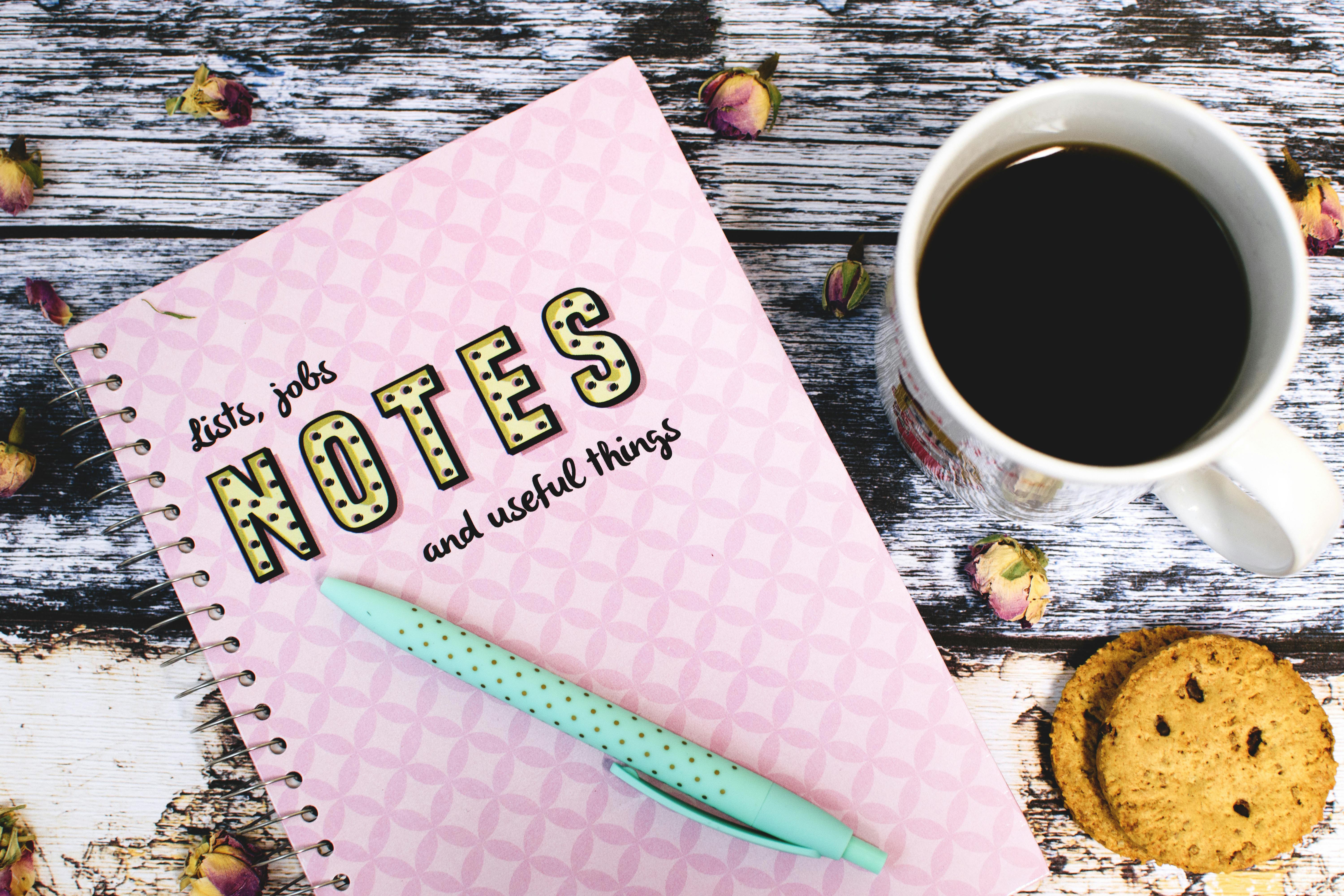
Notebook
I strongly suggest having some sort of notebook or journal that you use just for sewing. This is a journal book where you jot down anything that you need to remember and even use for brainstorming your projects. Think of it as a useful dump book for sewing. There are sewing planners available as well, but those are more for “planning” your projects. This particular notebook is for everything that comes to mind and information that you want to refer back to over and over again.
Remember, these items do not have to be the top of the line brands. You are learning and you can upgrade as you go. Save as much money as possible by borrowing, thrifting, and looking for great sales. Some of these items you may already have in your home, so you don’t have to purchase everything. At the end of the day, learn and have fun doing it. HAPPY SEWING!!!
